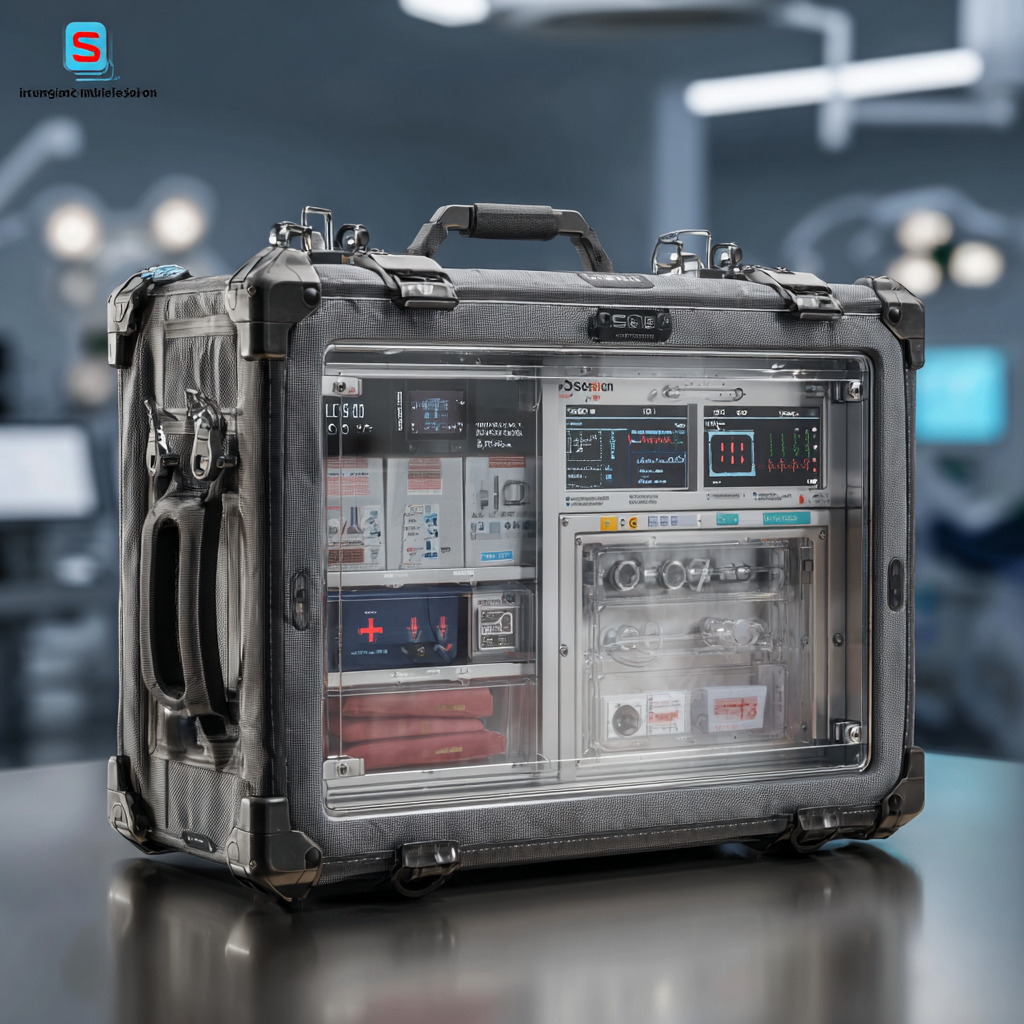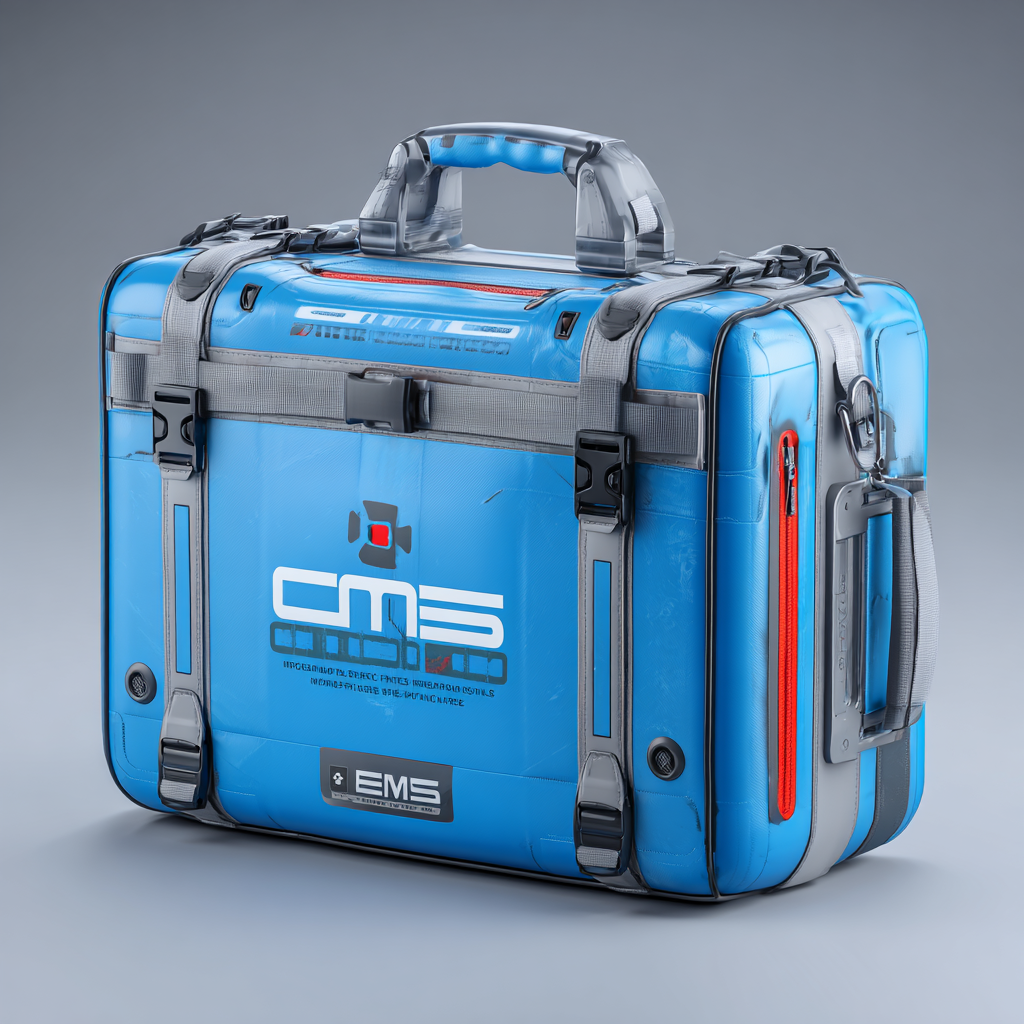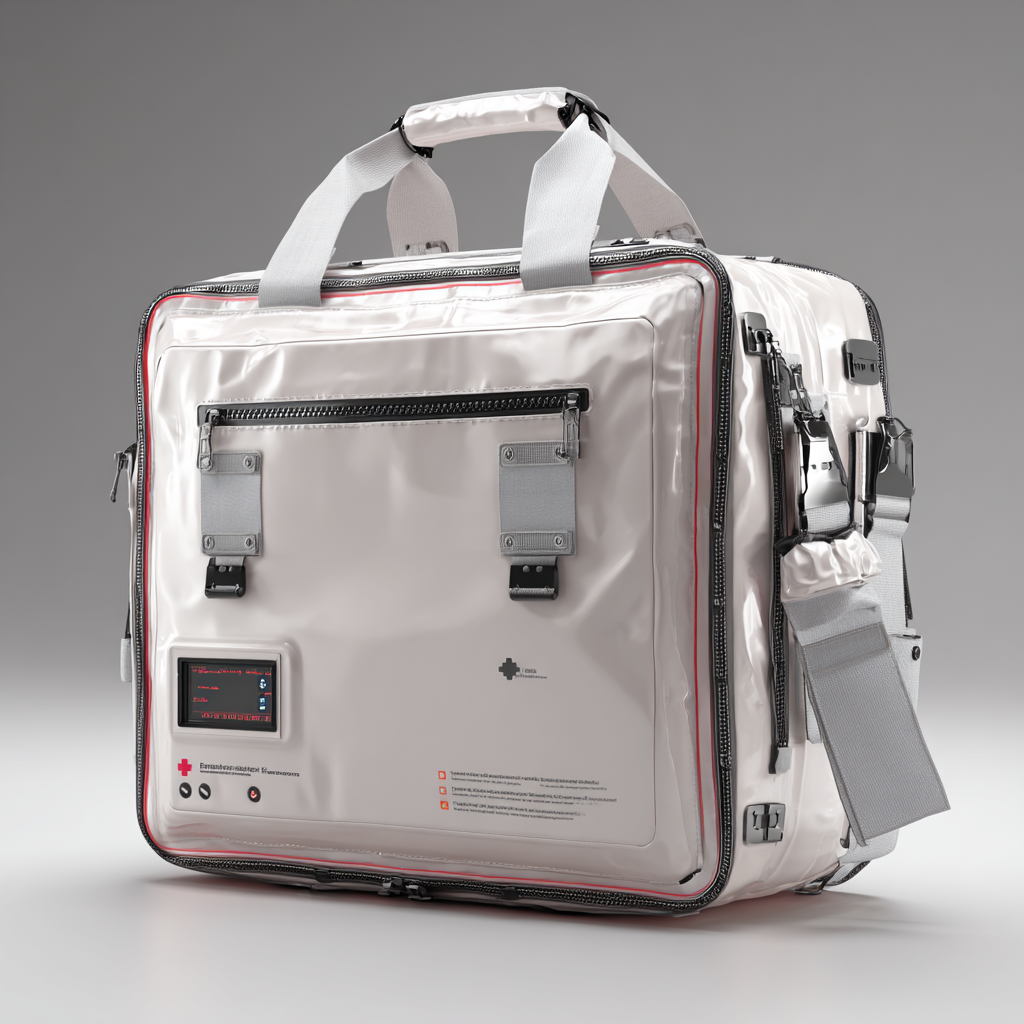- 0086-0769-87986375
- Welcome you to Dongguan Yili Bags Co., Ltd. website!
Emerging Innovations in Best Medical Equipment Bags Shaping the Future of Healthcare by 2025
The healthcare sector is witnessing rapid advancements in the realm of medical equipment, and a pivotal component of this evolution is the medical equipment bag. As reported by the Global Market Insights research, the medical equipment bags market is projected to reach USD 1.7 billion by 2025, driven by an increasing demand for efficient and reliable transportation of medical instruments. With the rise of innovative materials and designs, healthcare providers must prioritize the selection of high-quality suppliers to ensure functionality and compliance with industry standards. This blog will delve into effective strategies for identifying reputable vendors, enhancing the quality of medical equipment bags, and ultimately shaping the future of healthcare delivery. As we explore the latest innovations, it becomes clear that an investment in superior medical equipment bags is essential for improving operational efficiency and patient outcomes.

Innovative Design Trends in Medical Equipment Bags for Enhanced Functionality
The design of medical equipment bags is evolving rapidly, driven by the need for enhanced functionality and efficiency in healthcare settings. Innovations are focusing on materials that offer better durability and protection, as indicated by recent market research that highlights a growing preference for lightweight yet robust options. For instance, the practical case market is segmented by material types, with plastics, composites, and rubber becoming increasingly favored for their flexibility and resilience in demanding medical environments.
Moreover, the integration of advanced technologies is revolutionizing how medical equipment bags are utilized. Nearly 47% of users express a need for connectivity features and real-time alert systems in their equipment bags, akin to trends observed in and related to radar detection devices. These innovations not only improve the organization and transport of medical tools but also enhance response times during critical situations, aligning with the healthcare industry's push towards smarter, more interconnected solutions. As the medical device design and development service market continues to flourish, we can expect to see even more cutting-edge functionalities in medical equipment bags by 2025, ultimately aiming to streamline healthcare delivery and improve patient outcomes.
Emerging Innovations in Best Medical Equipment Bags Shaping the Future of Healthcare by 2025 - Innovative Design Trends in Medical Equipment Bags for Enhanced Functionality
| Feature | Description | Benefits | Trend Status |
|---|---|---|---|
| Modular Design | Interchangeable compartments for customized storage. | Increased organization and flexibility in use. | Emerging |
| Lightweight Materials | Use of advanced, durable synthetic materials. | Enhanced portability without sacrificing strength. | Growing |
| Integrated Technology | Smart features like built-in charging ports and tracking systems. | Improved efficiency and monitoring capabilities. | Emerging |
| Eco-Friendly Materials | Sustainable fabrics and manufacturing processes. | Reduced environmental impact and better industry standards. | Increasing |
| Ergonomic Design | Bags designed to reduce strain and improve comfort. | Enhanced user experience during transport and use. | Established |
Sustainable Materials Driving the Future of Medical Equipment Bag Manufacturing
The landscape of medical equipment bags is rapidly evolving, with sustainable materials taking center stage in manufacturing practices. According to a recent report by Grand View Research, the global medical bags market is projected to reach $11 billion by 2027, with a significant shift towards eco-friendly materials. Manufacturers are increasingly utilizing recyclable fabrics and biodegradable polymers to reduce environmental impact while maintaining functionality and durability.
Incorporating sustainable materials not only addresses environmental concerns but also enhances product efficiency. A study published by the Journal of Cleaner Production indicates that products made from recycled materials can reduce energy consumption by up to 60% during the manufacturing process. This shift is pivotal as healthcare facilities look to meet stringent regulatory standards while striving to lower their carbon footprint. Furthermore, the integration of advanced biodegradable materials enhances the lifecycle of medical equipment bags, ensuring that healthcare providers can adopt solutions that are both practical and environmentally safe. This innovation aligns with the growing trend of sustainability in healthcare, ensuring that by 2025, medical equipment storage solutions will be as green as they are efficient.

Technological Advancements: Smart Features in Medical Equipment Bags
The landscape of medical equipment bags is rapidly evolving, driven by technological advancements that enhance functionality and usability. As we approach 2025, the introduction of smart features in these bags is set to revolutionize the healthcare sector. Imagine medical professionals equipped with bags that not only store essential tools but also integrate real-time tracking and management systems. These innovations will allow for better organization and instant access to vital equipment, ensuring that healthcare providers can respond effectively in emergencies.
Moreover, advanced materials are being utilized to create smart medical bags that can monitor and display the status of equipment. For instance, temperature-sensitive bags will alert users if the contents are no longer in optimal conditions, safeguarding the integrity of medications and vaccines. Additionally, built-in RFID technology can streamline inventory management, significantly reducing the time spent searching for specific tools and increasing overall operational efficiency. With this combination of smart features and durable design, the future of medical equipment bags promises not only enhanced functionality but also a transformative effect on patient care delivery.

Global Market Trends: Chinese Manufacturing Impact on Medical Equipment Exports
The global medical equipment market is witnessing significant transformations, largely influenced by the surge in Chinese manufacturing. As reported by MarketsandMarkets, the medical equipment market is projected to grow from $400 billion in 2020 to over $600 billion by 2025, with a substantial share attributed to advancements in manufacturing capabilities in China. This exponential growth is shaping how medical equipment bags are designed, produced, and distributed across the globe, ensuring better quality, affordability, and accessibility.
In light of these trends, healthcare providers should consider the following tips when selecting medical equipment bags. First, prioritize bags made from durable, waterproof materials to ensure longevity and protection against contaminants. Second, assess organizational features such as compartments and pockets, which can significantly enhance efficiency during emergencies. Lastly, choose suppliers that adhere to international quality standards, ensuring the safety and reliability of the medical equipment being carried.
As China's influence continues to reshape the global market, understanding these trends can help healthcare professionals make informed decisions about the essential equipment they rely on in critical situations. Embracing innovations in medical equipment bags not only fosters operational efficiency but also enhances the overall quality of care provided to patients.
Case Studies: Successful Implementation of Innovative Medical Equipment Bags in Healthcare
In the ever-evolving landscape of healthcare, innovative medical equipment bags are becoming crucial in providing efficient care, especially in low-resource settings like Sub-Saharan Africa. Case studies highlight the successful implementation of these bags, emphasizing their role in enhancing mobility and organization of medical devices. Facilities often grapple with non-functional equipment, leading to significant operational challenges. By adopting circular economy principles in the design of these bags, healthcare providers can ensure sustainability while maximizing the utility of medical devices.
One standout example is the integration of Internet of Things (IoT) technologies within smart nursing systems, where custom-designed medical equipment bags equipped with tracking devices have shown to improve the efficiency of care delivery. This ensures that vital tools are readily available when needed and reduces the time spent searching for necessary equipment.
Tips: When choosing medical equipment bags, consider lightweight and ergonomic designs that can minimize physical strain on healthcare workers. Additionally, prioritize bags with adaptable compartments to accommodate various medical devices, ensuring a versatile and organized solution for emergency situations.
